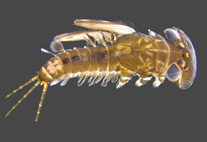Abstract
Based on re-examination of material belonging to the Museum of Zoology, Hamburg University, Germany, especially Georg Ulmer’s collection, as well as newly collected specimens from the Sunda Islands, the genuine concept of Compsoneuria Eaton, 1881 is revised. The genus has had as junior synonyms Compsoneuriella Ulmer, 1939 (Oriental) and Notonurus Crass, 1947 (Afrotropical). A recent molecular study removed Notonurus from this synonymy. The type species of Compsoneuria, Compsoneuria spectabilis Eaton, 1881, is redescribed. A lectotype male imago is designated for Compsoneuriella thienemanni Ulmer, 1939, type species of Compsoneuriella. Based on egg morphology, nymphal stages of both Compsoneuria and Compsoneuriella are unequivocally attributed. The nymph of Compsoneuria spectabilis is described and corresponds in part to what Ulmer (1939) described as the nymph of Compsoneuriella thienemanni. The latter nymph is also redescribed from material collected recently in Sumatra. Due to the important number of morphological differences between these two species, Compsoneuriella stat. prop. is removed from its synonymy with Compsoneuria. Besides C. thienemanni, the genus Compsoneuriella encompasses C. langensis (Braasch & Boonsoong, 2010) comb. nov. from Thailand and C. tagbanua (Braasch & Freitag, 2008) comb. nov. from the Philippines (Palawan), which is partially redescribed. All other species under the combined concept of Compsoneuria/Compsoneuriella are mentioned and their generic placements are discussed. The new combination Afronurus taipokauensis (Tong & Dudgeon, 2003) comb. nov. from Hong Kong, China is proposed.

